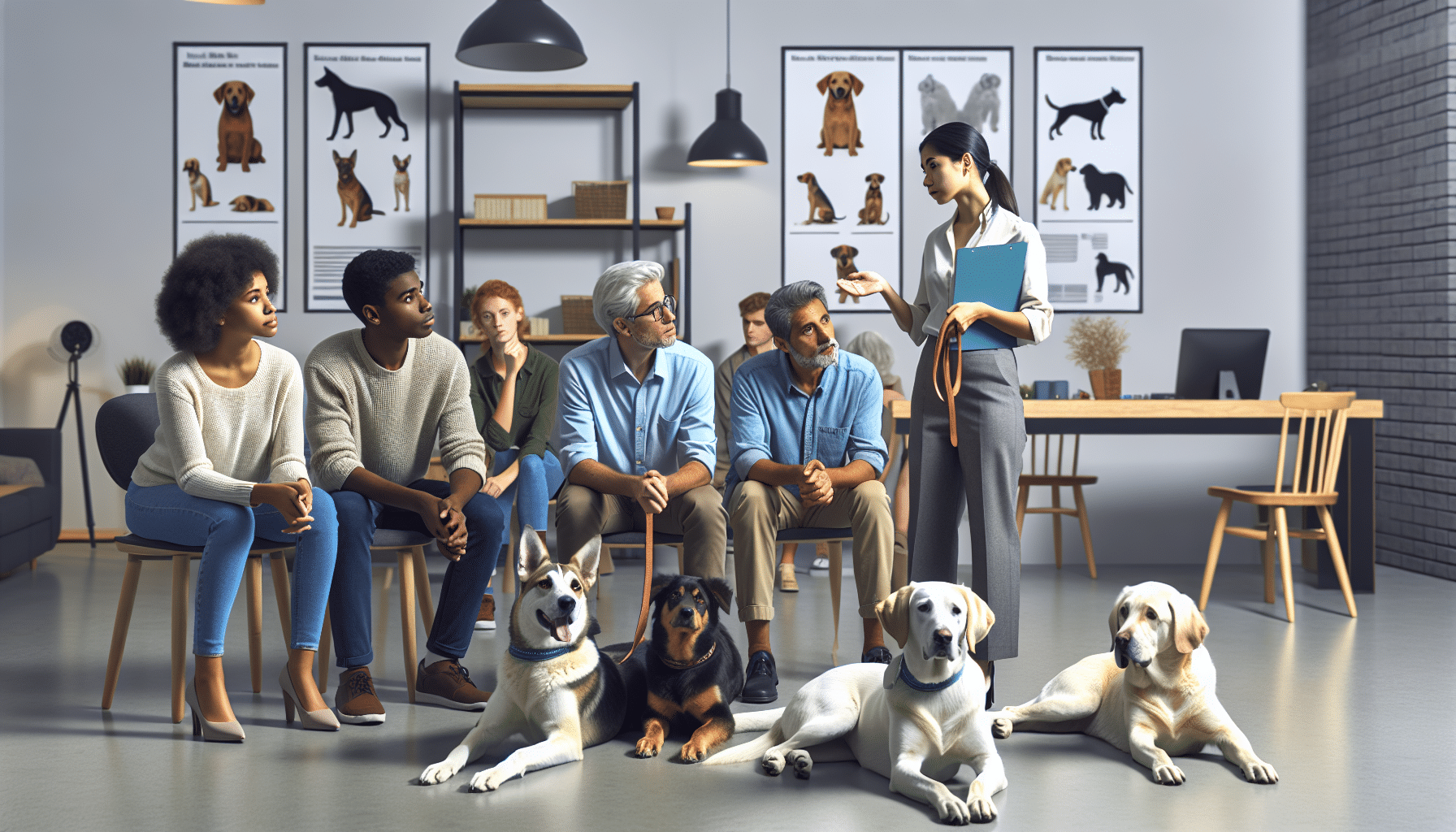If you've ever found yourself puzzled by your furry friend's behavior, fret no more! Our professional dog body language consultation offers you the key to unlocking the secrets of your beloved pet's nonverbal communication. Understanding your dog's body language is crucial in fostering a deeper bond and ensuring their happiness and well-being. With expert guidance and personalized advice, you'll gain invaluable insights into the messages your four-legged companion is trying to convey. So, embark on this enlightening journey and discover a whole new level of connection with your canine companion.

This image is property of images.pexels.com.
Overview of Dog Body Language
Understanding dog body language is crucial for any dog owner or enthusiast. Dogs communicate primarily through their body language, and being able to interpret and respond appropriately to their cues can greatly enhance the bond between you and your furry friend. Through understanding dog body language, you can also identify potential issues or concerns and address them proactively. In this comprehensive article, we will explore the importance of understanding dog body language, the benefits of professional dog body language consultation, and common misconceptions surrounding this topic.
Why is it important to understand dog body language?
Dog body language serves as the primary means of communication for our canine companions. By paying close attention to their body movements, facial expressions, and vocalizations, you can gain valuable insights into their emotions, needs, and overall well-being. Understanding dog body language allows you to respond appropriately, ensuring that your dog feels understood, safe, and secure. It also helps prevent misunderstandings and potential conflicts between dogs and humans or other dogs. In short, learning to interpret dog body language is vital for fostering a healthy, happy, and harmonious relationship with your furry friend.
Benefits of professional dog body language consultation
While anyone can learn the basics of dog body language, consulting with a professional in the field can offer numerous benefits. A professional dog body language consultant has in-depth knowledge and expertise in interpreting canine behavior, allowing them to provide valuable insights and guidance specific to your dog's individual needs. They can help you identify subtle cues and signals that might go unnoticed by an untrained eye, enhancing your ability to communicate effectively with your furry friend. Additionally, a professional consultant can guide you in addressing behavioral challenges, improving training techniques, and strengthening the human-canine bond.
Common misconceptions about dog body language
Misconceptions surrounding dog body language can lead to misunderstandings and misinterpretations of their behaviors. One common misconception is that a wagging tail always indicates a happy dog. While a loose, relaxed wagging tail often signifies a happy dog, a stiff or tucked tail can indicate fear, anxiety, or aggression. Another misconception is that a growling dog is always aggressive. In reality, growling can be a form of communication dogs use to express discomfort or to set boundaries. Understanding these misconceptions and learning to differentiate between different body language cues is essential for accurately interpreting your dog's behavior.
Choosing a Professional Dog Body Language Consultant
When considering a professional dog body language consultant, several factors should be taken into account to ensure you find a qualified and reputable expert.
Qualifications and certifications
Look for a consultant who has received adequate training and certification in the field of dog body language. A reputable consultant should possess knowledge in areas such as canine behavior, psychology, and communication. Certification from recognized organizations such as the International Association of Animal Behavior Consultants (IAABC) or the Certification Council for Professional Dog Trainers (CCPDT) can provide reassurance of their expertise and commitment to ongoing professional development.

This image is property of images.pexels.com.
Experience and expertise
Consider the consultant's experience in working with dogs, particularly those with similar behavioral concerns or personality traits as your own dog. A consultant with a diverse range of experience can draw upon their knowledge and techniques to address a variety of behavioral challenges effectively. Inquire about their specific areas of expertise and their success stories in helping dogs and their owners navigate behavioral issues.
Reviews and recommendations
Read reviews and seek recommendations from trusted sources, such as veterinarians, trainers, or other dog owners who have worked with the consultant in the past. Positive feedback and testimonials can indicate the quality of their services and their ability to provide effective guidance and support. Don't hesitate to reach out to previous clients to hear about their experiences firsthand.
Initial Assessment and Evaluation
Once you have chosen a professional dog body language consultant, they will conduct an initial assessment and evaluation of your dog's behavior. This step is crucial in understanding your dog's individual needs and tailoring their guidance accordingly.
Observing the dog's behavior
The consultant will spend time observing your dog in various environments and situations. This observation allows them to gain insights into how your dog interacts with their surroundings, other animals, and people. They may also ask you specific questions about your dog's behavior and any concerns you have noticed.
Assessing the dog's body language
During the assessment, the consultant will carefully analyze your dog's body language. They will observe their posture, facial expressions, tail position, and any other physical cues that may indicate your dog's emotional state. This assessment helps the consultant in identifying any signs of stress, fear, anxiety, or other potential behavioral issues.
Identifying potential issues or concerns
Based on their observations and assessment, the consultant will be able to identify any potential issues or concerns with your dog's behavior. These could include fear aggression, separation anxiety, resource guarding, or leash reactivity, among others. This identification is crucial for developing a tailored behavior modification plan that addresses your dog's specific needs.

This image is property of images.pexels.com.
Interpreting Dog Body Language
Understanding different types of dog body language is key to effectively communicating and responding to your furry friend's needs and emotions.
Recognizing signs of stress or anxiety
Stress and anxiety can manifest in various ways through a dog's body language. Some common signs include panting, trembling, lip licking, yawning, and excessive shedding. Understanding these cues can help you recognize when your dog is feeling overwhelmed or uncomfortable in a particular situation, enabling you to intervene and provide the necessary support.
Interpreting positive and negative body language cues
Positive body language cues, such as a relaxed body posture, loose wagging tail, and soft, relaxed facial expressions, indicate that your dog is comfortable, happy, and open to interaction. On the other hand, negative cues, such as a tense or stiff body, raised hackles, curled lips, or a tucked tail, may suggest fear, aggression, or discomfort. Learning to interpret and respond appropriately to these cues is vital for ensuring your dog's well-being and maintaining a positive and trusting relationship.
Communication Strategies
Building effective communication with your dog involves more than understanding their body language. It also requires establishing a strong rapport and utilizing appropriate communication techniques.
Building a rapport with your dog
Developing trust and mutual understanding forms the foundation of a healthy relationship with your dog. Spend quality time bonding with your furry friend through play, training, and positive reinforcement. By establishing a strong bond, your dog will feel secure and safe, making communication more effective.
Effective use of voice and tone
Dogs are highly attuned to human vocal cues and tone of voice. Use a calm, confident tone when giving commands or providing reassurance, as this helps convey clear messages to your dog. A high-pitched, excited tone may indicate joy or excitement, while a low and stern tone may convey seriousness or authority.

Using body language to communicate with your dog
Just as dogs use body language to convey messages, you can use your own body language to communicate with them. Use clear and consistent hand signals alongside verbal commands to reinforce your message. Additionally, cues like standing tall and facing forward can convey confidence, while crouching or turning away can signal submission or fear.
Addressing Behavioral Challenges
Understanding dog body language can greatly assist in addressing various behavioral challenges that may arise in your dog's life.
Common behavioral challenges associated with body language
Many behavioral challenges, such as aggression, fearfulness, and separation anxiety, are often rooted in underlying emotional issues that can be detected through body language. By recognizing these challenges early on, you can implement appropriate strategies to address and modify your dog's behavior effectively.
Developing behavior modification plans
Once the consultant has identified the specific behavioral challenges your dog is facing, they will work with you to develop a behavior modification plan. This plan may include a combination of desensitization, counter-conditioning, positive reinforcement, and other techniques tailored to your dog's individual needs.
Implementing positive reinforcement techniques
Positive reinforcement is a key component of effective behavior modification. By rewarding desired behaviors, you can motivate your dog to repeat those behaviors in the future. Positive reinforcement techniques, such as treats, praise, and play, can be used to encourage your dog to display appropriate body language and respond positively to training.
Training and Socialization Techniques
Training and socialization play vital roles in a dog's development and can be strongly influenced by understanding and responding to their body language cues.

Training methods that complement understanding of body language
Implement training methods that align with your understanding of dog body language. Positive reinforcement training techniques, such as clicker training and reward-based training, are particularly effective in fostering a positive learning environment and strengthening the bond between you and your dog.
Socialization exercises and exposure to different body language cues
Exposing your dog to various environments, people, and other dogs can help them develop strong social skills and improve their ability to interpret and respond to different body language cues. Gradually introducing your dog to new experiences and monitoring their body language during these interactions is crucial for promoting positive socialization.
Teaching dogs to communicate appropriately with humans and other dogs
Understanding dog body language allows you to teach your dog appropriate ways to interact with humans and other dogs. By recognizing signs of discomfort or fear, you can intervene and provide guidance, ensuring that interactions remain positive and safe. This helps prevent potential conflicts and fosters healthy relationships with both humans and other dogs.
Managing Aggression and Fear
Recognizing signs of aggression and fear in dog body language is essential for creating a safe and supportive environment for your furry friend.
Creating a safe and supportive environment
It is crucial to create an environment that minimizes potential triggers for aggression and fear. Providing a secure space where your dog feels safe and respected is fundamental. Manage your dog's interactions and exposure to situations that may provoke aggression or fear, and ensure they have a designated space for relaxation and retreat.
Implementing desensitization and counter-conditioning techniques
Desensitization and counter-conditioning techniques can be effective in helping dogs overcome fear and aggression. These techniques involve gradually exposing your dog to the specific trigger that causes fear or aggression while pairing it with positive associations or rewards. Over time, this can help change your dog's emotional response and alleviate their anxiety or aggressive tendencies.
Improving Human-Canine Bond
Understanding and effectively responding to your dog's body language can greatly enhance the bond between you and your furry companion.
Enhancing communication and connection
By paying attention to your dog's body language and responding appropriately, you demonstrate that you understand and care for them. This enhances the communication and connection between you and your furry friend, fostering a deeper bond based on trust and mutual understanding.
Encouraging trust and mutual understanding
Understanding your dog's body language and responding in a supportive and positive manner helps build trust. When your dog feels understood and acknowledged, their trust in you deepens, leading to a stronger bond and a more harmonious relationship.
Promoting a positive and harmonious relationship
When you understand and respond appropriately to your dog's body language, you create an environment that supports their emotional well-being. A positive and harmonious relationship is built on effective communication, trust, and mutual respect, leading to a happier life for both you and your dog.
Follow-up and Continued Support
A professional dog body language consultant can provide ongoing monitoring, guidance, and support to ensure a positive outcome for you and your dog.
Importance of ongoing monitoring and assessment
Behavioral changes and challenges can occur throughout your dog's life. Regular monitoring and assessment by a professional consultant can help you identify any new concerns or refine existing behavior modification strategies. Ongoing support is vital to maintaining your dog's progress and addressing any emerging issues promptly.
Providing guidance and resources for further learning
A consultant can provide personalized guidance and resources that are tailored to your dog's specific needs. This may include training exercises, reading materials, or referrals to other professionals who can further support you in understanding and addressing your dog's body language.
Available support channels for additional questions or concerns
A reputable consultant will offer support channels for any additional questions or concerns that may arise. This may include phone or email consultations, follow-up visits, or access to online communities and forums where you can connect with other dog owners facing similar challenges. Continued support ensures that you have access to expert advice whenever you need it.
In conclusion, understanding dog body language is a valuable skill for any dog owner or enthusiast. By consulting with a professional in dog body language, you can gain insights into your dog's behavior, address behavioral challenges effectively, and strengthen the bond between you and your furry friend. Remember to choose a consultant with the appropriate qualifications and experience, and make use of the communication strategies, training techniques, and resources they provide. By understanding and responding to your dog's body language, you can create a positive and harmonious relationship that will bring joy and fulfillment to both you and your furry companion.


